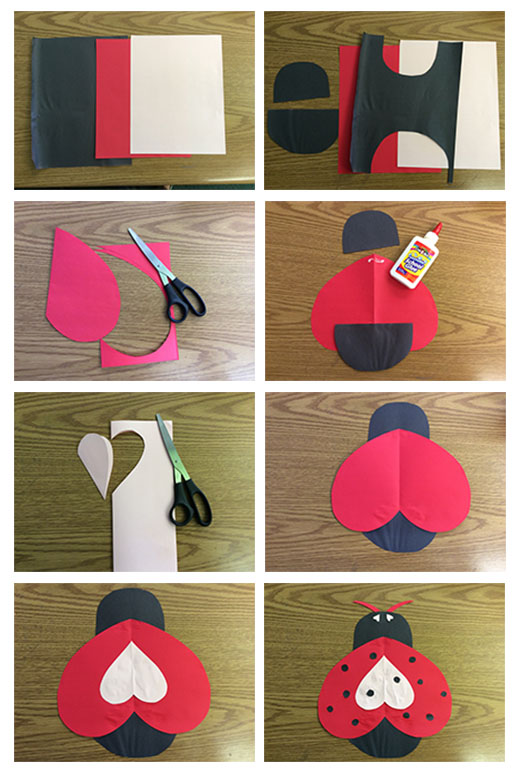It’s that time of year where people begin to catch the ‘love bug’ and give sweet cards, candy, and all things white, red, or pink. This is an opportunity to facilitate activities with your classroom or project group that does not involve all the sugar, but is just as sweet!
For all projects you will need: Construction Paper, Glue, Scissors
That’s it!
Lady Bug
Lady Bug Facts:
– Are actually beetles from the Hemiptera order of insects
– The crops in Europe were plagued with pests (most likely aphids) and farmers prayed to the Virgin Mary for good fortune. These beetles came and helped the crops and thus Lady Bugs were named lady beetles, in honor of the Virgin Mary.
– They normally will eat as many as 5,000 aphids, plant predators.
– The spots have nothing to due with their age. However, the position of the spots can determine the species of the Lady Bug.
Butterfly
Butterfly Facts:
– Their lifecycle is made up of four parts: egg, larva, pupa, adult
– They have four wings
– Each wing has scales on them and are filled with blood
– They drink nectar from flowers with the taste receptors in their feet
Bumble Bee
Bumble Bee Facts:
– They are born in a nest out of wax in a small cell
– 24 kinds of bumblebees of the 250 in the world live in the United States
– They feed on nectar and pollen from flowers
– Bumble Bees and Honey Bees are not the same, Bumble Bees are much bigger and less aggressive
Caterpillar
Caterpillar Facts:
– Caterpillars are the second stage of the lifecycle of Butterflies
– Their only function is to eat so that they will have enough energy to become a butterfly
– Most caterpillars eat plants
– Caterpillars have 12 eyes
– When they are ready for the next phase in their lifecycle, caterpillars will shed their outside layer of skin to create a chrysalis
Resources for Facts
http://insects.about.com/od/beetles/a/10-facts-ladybugs.htm
http://www.sciencekids.co.nz/sciencefacts/animals/butterfly.html
http://insects.about.com/od/butterfliesmoths/a/10-Cool-Facts-About-Caterpillars.htm
http://www.bugfacts.net/bumble-bee.php#.VMvDN2TF9XA
http://bumblebeeconservation.org/get-involved/bumble-kids/






Recent Comments